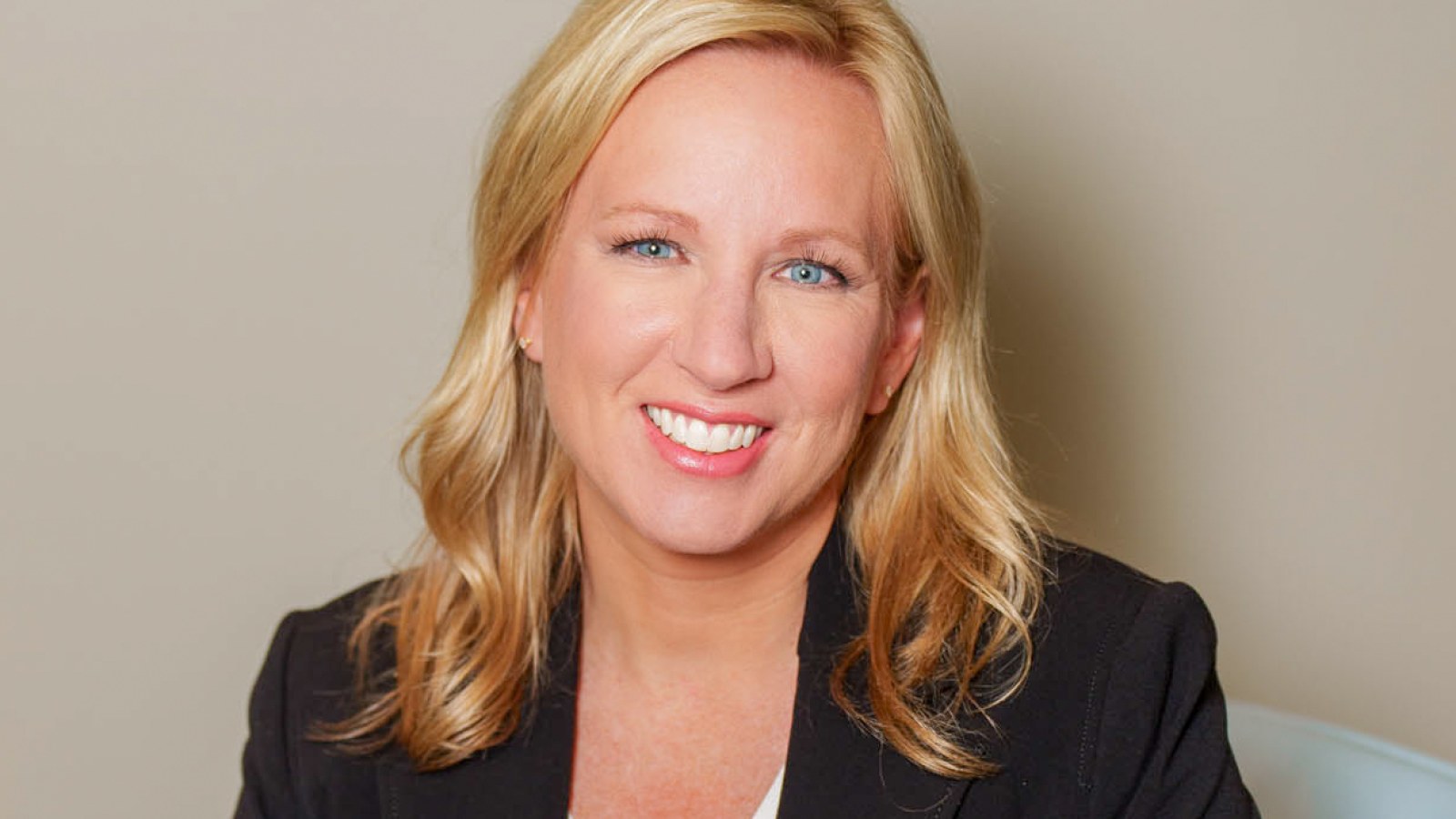By Alexis Kayser
Copyright newsweek

This is a preview of Access Health—Tap here to get this newsletter delivered straight to your inbox.Newsweek unveiled our Best Smart Hospitals ranking for 2026 yesterday, in collaboration with our data partners at Statista. I had the honor of announcing the top 10 hospitals live at the ARC Summit in Tel Aviv, Israel—and it was amazing to see how much excitement this list has generated.In my remarks at the Summit, I answered a question that I get asked a lot: “Why does Newsweek rank hospitals?” It’s a fair question. In my past role at Becker’s Hospital Review, I covered some of the controversy around hospital rankings from 2022 to 2023. At that time, a string of medical school and health system leaders spoke out against U.S. News’ ordinal rankings and even Leapfrog’s hospital grades. There were concerns that rankings could serve as maladaptive motivators for health institutions, encouraging them to expend resources to climb the ranks rather than to serve their patients.But watching the celebrations and reactions at this year’s ARC Summit, I noticed something different. Hospital leaders were cheering each other on, regardless of who placed higher on the list (or whether they placed at all). I think that represents a fundamental shift in the way that health care organizations are positioning themselves in this digital era. We’re seeing new collaborations at CMS that aim to improve interoperability. We know that large pools of data are the best food for accurate AI models. Health systems are forming coalitions to lobby for the issues that matter to them, and existing collaborations are getting stronger. Even payers and providers are starting to search for common ground. Health care organizations across the ecosystem can no longer do this alone.So here’s my answer to that “why” question: By tracking the movements of the best and the brightest, we can find insights that lead to collective improvement. Lukas Kwietniewski, Statista’s senior director of health care analysis, shared some of those insights at yesterday’s ARC Summit. For example, he noted that in the Americas, we are ahead of the curve in information systems and electronic functionality. However, we still have room to improve in virtualization and patient-facing tools.It’s also important to recognize the rankings’ impact on patients. The work that you all do in health care is some of the most impactful work in the world—it affects all of us. From the time we are born until the time we take our last breath, human beings are engaged in a long-term relationship with their health care providers. The relationship between a patient and their physician is one of the most important relationships in their life, and can make all the difference in the length and quality of that life.That relationship has changed since the dawn of the internet and the smartphone and, now, AI. People no longer rely on their doctors alone to get the latest research or seek out a name for their symptoms. With a few clicks of a button, they can access a wealth of knowledge that informs the way they eat, exercise and interact with you, their hospital systems.Unfortunately, misinformation has also run rampant in the digital age. That’s why Newsweek’s hospital rankings and health care coverage are so important to us and to the 1.65 million people who visit our health section each month.We hope that our rankings will serve as a trustworthy guide for people who are deciding where to seek care, and that through collaboration with data partners like Statista, we can provide a source of truth that takes some of the guesswork out of those important decisions.Our Best Smart Hospitals ranking is especially timely. Investments in digital health and technology are potentially paving the way for a sustainable future in health care. Right now, many of your hospitals are doing work that was the stuff of science fiction novels only a few years ago.My favorite part of my job is getting to share some of those success stories—the doctor who can finally take her child to soccer practice because, thanks to ambient scribing technology, she doesn’t have to spend hours charting each night. The rare cancer patient with a two-month prognosis who, thanks to whole genome sequencing, has beaten the odds and lived a healthy decade tumor free. The hospital chief digital officer who piloted an AI chatbot and now gets hugs from clinicians in the hallway. I’m excited to see what new heights we can reach with continued innovation and collaboration.I encourage you to check out our ranking of the Best Smart Hospitals 2026 (and the Best Specialized Hospitals 2026, which also went live yesterday). Congratulations to all of the hospitals on—and off—of these lists. They represent a collective achievement for the health care industry.In Other NewsMajor health care headlines from the week
Newsweek’s Digital Health Care Forum is next Tuesday, Sept. 16, in New York City. We look forward to gathering more than 120 hospital and health system executives for conversations on AI governance, breaking down data siloes, building trust in new technology and more.
It’s not too late to join us! You’ll be in good company among leading health care organizations like Kaiser Permanente, Sanford Health, Memorial Hermann Health System and Northwell Health. Click here to view the agenda and secure your ticket.
HHS Secretary Robert F. Kennedy Jr., unveiled his “MAHA Report” in conjunction with the White House this week. The 20-page document laid out plans to further investigate adverse vaccine reactions, issue a report on the causes of autism and target drivers of childhood chronic disease. The report names some of those drivers, including “ultra-processed foods,” “pervasive technology use” and “overmedicalization” as drug prescriptions for American youth rise.
Read more from my colleagues at Newsweek.
Epic will have to face antitrust and monopolization claims that it has tried to get thrown out. A U.S. judge ruled that the health data startup Particle Health had grounds for some of its claims against the EHR giant, which were filedin a New York federal court last September.
Particle alleges that Epic is a “monopolist” in the EHR market, and unfairly tried to assert dominance in the payer platform market after releasing its own service in 2021. According to court filings from the plaintiff, Particle posed a threat to Epic’s Payer Platform—leading Epic to use “intimidation” and defamation to try and force Particle out of the market.
The federal judge tossed some of those claims on Sept. 8, including allegations that Epic defamed Particle, committed “trade libel” and conspired with other companies to squander competition.
However, she maintained that Particle could proceed with other claims, writing, “Epic’s conduct was sufficiently anticompetitive.”
In a statement shared with Reuters, Epic denied wrongdoing and said it looked forward to presenting evidence on the remaining claims.
President Donald Trump signed a memorandum this week to crack down on direct-to-consumer prescription drug advertisements. HHS and the FDA saidthat they would start requiring pharmaceutical companies to include “full safety warnings” in these ads.
In other pharmaceutical news, Hims & Hers announced an exclusive partnership with Marius Pharmaceuticals on Wednesday. Hims & Hers providers can now prescribe compounded enclomiphene, which studies suggest can double testosterone levels. And in 2026, the platform will begin offering the oral testosterone Kyzatrex, produced by Marius.
Pulse CheckExecutive perspectives on key industry issuesI’m delighted to kick off next week’s Digital Health Care Forum with opening remarks from Tina Freese Decker, board chair of the American Hospital Association and president and CEO of Corewell Health in Michigan.Ahead of the event, I connected with Decker to learn more about her priorities at the national and organizational levels. Here’s what she told me via email:Tina, the health care landscape has shifted significantly since you became board chair of the American Hospital Association this year—from Medicaid cuts to rapid advancements in technology. What is the number one priority you believe hospitals and health systems must rally around in the year ahead?This is our opportunity to focus on transformation and innovation. No one would have purposefully designed a health care ecosystem like the one we have. We’ve spent a lot of time and effort creating patches and workarounds to have a sustainable model. With some of the recent funding changes, these patches are being removed, which will require hospitals to accept reality and make realistic and practical choices. Hospitals must embrace new technologies and innovation to advance care and improve lives in our communities. We need a model for the world of 2065, and it’s time to start putting proposals on the table that will get us there. We need to be doing everything we can to become more effective and innovative today so we can keep serving our neighbors far into the future. It will be hard. However, I know from talking to many leaders through my role in the AHA, that we can do hard things. We already do them every day.How is the AHA working to ensure hospitals’ voices are heard in Washington as policymakers weigh cuts to Medicaid, changes in Medicare payment, and other proposals that could reshape the industry’s financial foundation?As the 2025 chair of the AHA Board of Trustees, my goal this year was to make sure that members felt heard, listened to and cared for, so that they can focus on what they do best: caring for our communities. We work closely with our members through regional policy boards, committees and strategic listening discussions to make sure we know what they want and need, and that we understand the opportunities and challenges that are top of mind.The AHA advocates on those key issues in a variety of ways — by meeting with lawmakers and their staff, releasing reports and studies, talking with the media, advertising through the airwaves and in digital publications — just to give a few examples. We strive to speak with one voice, representing the diverse membership of hospitals and health systems, including physicians and caregivers, across our country.The AHA’s main message for policymakers this fall is that hospitals and health systems cannot sustain any additional funding reductions, especially as we face the implementation of the One Big Beautiful Bill Act and its significant cuts to Medicaid and other health programs. We are urging Congress to extend key policies, including several that expire at the end of September. These include continuing relief from Medicaid Disproportionate Share Hospital cuts, as well as extending programs that support telehealth, hospital-at-home and rural hospitals. We also are advocating for Congress to extend the enhanced premium tax credits, which help millions of individuals and families purchase insurance on the Health Insurance Marketplaces. There’s a lot going on, but we are all in to make sure our hospitals and health systems have what they need to care for our neighbors.Digital transformation—especially AI, virtual care and data interoperability—is changing how hospitals operate. What advice do you have for leaders trying to balance investments in innovation with the immediate financial realities they face?With all of the challenges facing health care, we know that we need to transform how we provide care for people. A shrinking workforce capacity as well as reduced funding means that it’s no longer an option to change, but an imperative. This is where technology, AI and digital transformation can play a significant role in mitigating these trends.For example, at Corewell Health, we were early adopters of ambient listening technology for providers and are expanding these capabilities to nursing and other disciplines. We are embedding machine learning and AI capabilities into workflows and leveraging automation and AI to reduce administrative burden in our back office as well as improve care on the frontlines. Within the next five years, we expect hospital “smart rooms” to be the norm, which leverage cameras and AI-assisted alerting to improve safety, enable virtual care models across our footprint and allow us to boost efficiency while also improving quality and outcomes.While this is all incredibly exciting, it’s also important to focus our efforts on those things that have a real impact. There are a lot of vendors and ideas in the marketplace right now promising shiny new features, but not all those things will translate into real, sustainable impact. For us, we have a strong technology governance practice which starts with 10 “rules of the road”—principles that help guide all our leaders and team members in how to approach technology decision making and avoid wasteful efforts. We leverage a robust enterprise portfolio governance structure which is clinically and operationally led, ensuring our technology-related priorities are aligned with the most important opportunities.While our key vendor partners in health care will provide much of the technology we need, there are times when we see opportunities that are outside of those capabilities. To solve this, we’ve created an agile team structure to specifically focus on automation, AI and innovation. This is a cross-functional approach, which blends clinical informatics, data/analytics, software development/automation and AI engineering skills to connect more dots and fill in the gaps. We believe this approach of balancing tried-and-true vendor partners with deliberate experimentation for innovative and new capabilities will keep us moving forward and on the right track.The bottom line is that while it’s critical to leverage technology advancements to advance health care into the future, it’s even more critical to have a robust, disciplined approach to evaluating these options and focusing scarce resources where they can have the most impact. Opportunities are everywhere, but it’s becoming much easier to spend time and energy on technology that is flashy. Instead, we must focus on those that deliver measurable value to our patients, members and the communities we serve.C-Suite ShufflesWhere health care leaders are coming and going
Dr. Craig Albanese is making the move from Duke University Health System to Kaiser Permanente. The Duke CEO (of two years and some change) will join Kaiser on September 29 as president of integrated care and coverage.
Colin Morelli started a new role as vice president of AI product at Advocate Health this week, according to a post on his LinkedIn profile. He most recently served as vice president of product management at Ribbon Health, a software development company that merged with H1 earlier this year.
Mayo Clinic has tapped Sonja Fulmer as its senior director of health policy. She spent the past 11 years with the FDA, serving as acting director of its Digital Health Center of Excellence from April to August of this year. She left that role last month—joining more than a dozen top FDA leaders who have resigned under the Trump administration. Many of them said that they disagreed with Secretary Kennedy’s stance on public health and vaccines.
Executive EdgeHow health care execs are managing their own healthKeeping with the smart-hospital spirit, I dove into the world of robotics this week with Dr. Shanel Bhagwandin, medical director of the gastrointestinal surgical oncology program at Jupiter Medical Center in Florida. He is also the program director for the hospital’s NPF Center of Excellence for Pancreatic Care.In August, Bhagwandin and his team performed their first robotic Whipple surgery—a complex procedure used to treat used to treat pancreatic cancer, cysts, tumors and pancreatitis along with other gastrointestinal conditions. The surgery was performed using the advanced da Vinci 5 robot, which helped Jupiter improve patient outcomes. Bhagwandin’s first robotic patients were walking within a week of their procedure and experienced shorter hospital stays than patients who had non-robotic Whipples.I asked Bhagwandin how the increased use of robotic surgery is making life easier for surgeons. Here’s his answer:
“Advanced technology is revolutionizing the field of gastrointestinal (GI) surgery, making procedures more efficient and less invasive.
“With the advent of robotic-assisted surgery, we can now perform complex operations with unparalleled precision and control. This technology allows for smaller incisions, which translates to reduced pain and expedited recovery times for our patients.
“Additionally, enhanced imaging techniques provide us with detailed, real-time views of the surgical field, enabling us to navigate and operate with exceptional accuracy.
“These advancements improve surgical outcomes and significantly enhance the overall patient experience, making the journey to recovery smoother and more comfortable.”



